

Suunto Blog
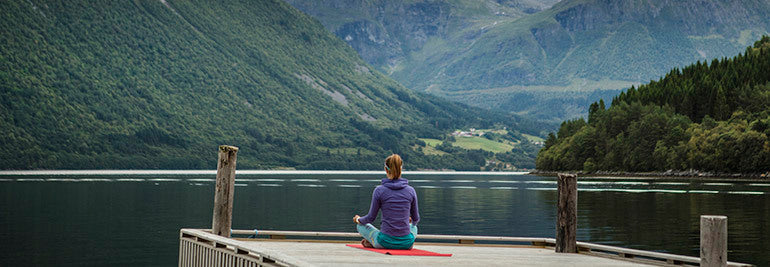
Finding the flow with yoga and running
Emelie Forsberg began practicing yoga when she was 15. Now, 31, it remains a staple in her life, one that keeps her grounded and calm. It’s so important to her in 2016 she traveled to India and completed a yoga teacher training course.
“When I’m in a good flow, when I’m in my routine, I practice daily,” she says. “I think it has always given me a calmness just to sit down to feel the body – it allows me to tune into how the muscles are feeling, where the tender spots are, what needs attention. It gives me the sensitivity to be able to listen to the body.”
Listening to the body is central to the training philosophy of her and her partner Kilian Jornet. Rather than complex tables and stats, they depend on a sensitive receptiveness to what the body is telling them on any given day. For Emelie, yoga helps this process.
“The whole philosophy of yoga, the mindfulness part, can really make me a better person and in that way it makes me a better athlete,” she says. It helps me focus and to accept the ups and downs.”
She likes to start her morning on her yoga mat so she can tune into whether her body is feeling tired, the level of stiffness, mental sharpness, or whether or not there are the subtle signs telling her an injury is forming. This awareness is essential, she says, to balancing her training and recovery time.
Click here for Emelie's top 7 yoga poses for runners
“When I make the time for yoga I really feel good. I’m in more of a flow. It’s really helped me stay in balance,” she says.
After a big training week or race, Emelie rolls out her yoga mat to begin the process of recovery. She begins with gentle movements that synchronize her breathing with gentle spinal movements, slowly warming the body and releasing some of the unnecessary stiffness.
“After a big race or week it’s nice to move my body in another way,” she says. “The stretching helps for sure, to feel a bit relaxed in the body after hard training. It helps me maintain my upper body flexibility, as I’m quite stiff in the upper body, around the shoulder blades. For some others, it might be hips and glutes.”
In the media and online yoga is often depicted as being the domain of thin, ultra-flexible women who look like elite gymnasts. For many people, especially athletes, this can be a turn-off. Strength, stability and stamina are prized, not the contortionism.
Emelie says this is not what yoga really is and not how she, as an athlete, approaches it. Having a good yoga teacher, who understands physiology and sports science, is important.
“It’s not important for me to be really flexible,” she says. “As athletes we use our muscles in a very different way. I have stiffness I need as a runner, for example a stiff lower back – I don’t want to work on that.
“I won’t do many of the back bending yoga poses because they are not good for running. It’s important to know your body and how yoga can affect your running.”
All images by Matti Bernitz / Suunto
More related stories:
How yoga can make you a better mountain runner
How to bring mindfulness to the trail
Five yoga moves for runners
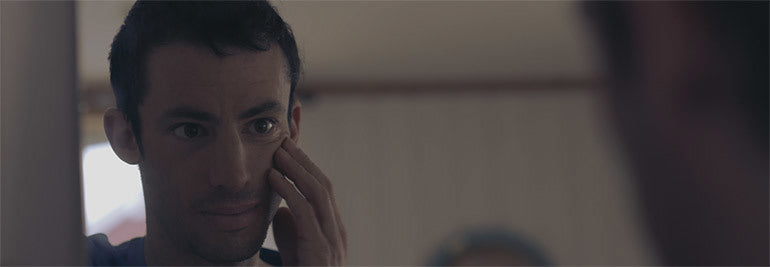
Kilian Jornet – Running 30's
“I had a big accident four years ago and dislocated both of my shoulders at the same time. Since then I have dislocated them a few times every year. I knew I needed to get this surgery. It was mandatory,” says Kilian.
“I am an outdoor person. I don’t want to be stuck inside, but I knew I needed to stay one or two months indoors. That was hard, but I was mentally prepared for that.”
Watch the video and see the Kilian copes with the slow recovery process of two operated shoulders at once.
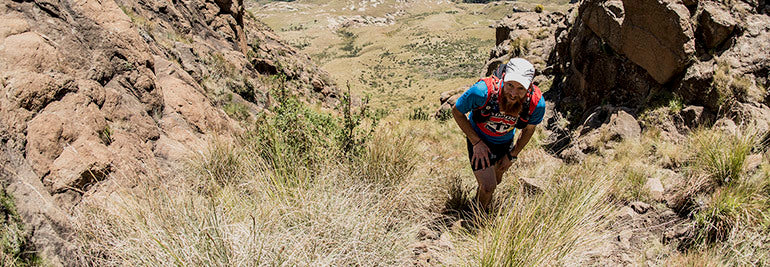
A long talk before a long run: Gary Robbins on his upcoming Barkley Marathons
For the truly competitive athlete, every loss or DNF is a tough one. But there have likely been very few losses tougher than Canadian ultra-runner Gary Robbins’ result 2017 Barkley Marathons. After nearly 60 hours of racing, a missed turn in the last moments took him off the course as he approached the finish. He crossed the finish line from the wrong direction, a few seconds after the 60-hour time limit. It was unequivocally a DNF – and probably the most heartbreaking DNF in the history of DNFs.
It’s the kind of result that has a less willful runner saying ‘never again’. Gary Robbins, of course, is not the kind of runner, and after a quick recovery – he ran the Nolan’s Fourteens just a few months later – he was back on the Barkley horse.
After last year’s dramatic non-finish, Gary hit his saturation point talking about the race – no, really, he even told us so – so we figured we’d better focus on this year’s race. Read on to find out how his training and preparation is going.
Third time training for the Barkley Marathon: What’s different?
Through the first two years, I was definitely on the starting line with the physical and mental capabilities to finish the race. My training has been successful. I don’t believe that there was anything in my training for the first few years that I had to alter.
But I did find that by focusing on this specific race for so long, that had me moving through difficult terrain at 2 miles per hour, I got really efficient at moving 2 miles per hour – so I haven’t done much run training for the last few years. So, when I got back into my training in November my focus was on more run training. I got back into more 100-mile distance weeks, rather than vertical-based weeks for a couple of months in the winter. It helped to increase my fitness level. Last month the focus has shifted to 100% vertical training. Initially 20,000ft of climbing, then 30,000ft, and last week 40,000ft of climbing.
So I did change my training a bit initially to gain some fitness that I felt I was lacking. But the actual training block leading into the last Barkley worked so well that I’m actually looking at replicating that again.
Ready to go from dawn till dusk – and much much longer. (©Ian Corless, iancorless.com)
Last year the race kicked your ass. How do you plan to deal with it on the course?
The race kicked my ass both years.
Last year, getting through the full 60 hours and the full five laps of the course was infinitely harder than even doing four laps. John Kelly even mentioned that there’s such a steep curve of fatigue and difficulty and pain threshold that it’s unfathomable how much more difficult doing the additional lap could be. I came out of that even more physically and mentally beat up. But – I recovered from the ass kicking very well in 2017. Well enough that only a few months later I went to Colorado and finished the Nolan 14’s, which is 14 consecutive 14,000 ft peaks in under 60 hours.
That was the big difference in 2017 – that I recovered well after the race. In 2016 I really struggled for 6 to 8 months afterwards because I had done so much before the 2016 race. For the better part of 10 months, I have been healthy fit, been a runner, and feeling good about things which set me up to be able to withstand that ass-kicking this time.
Any non-traditional training?
Nothing non-traditional. Definitely kept focusing on orienteering and cross-training with strength training, things that I feel that are big components for success at the race. There is a large element of core and upper body strength that comes into play with a race like this – and moving smarter allows you to move a little bit slower because every mistake that you make means you need to move faster to make up for it. So, the better you can be with navigation, the more luxury you can give yourself with time on course.
Do you feel like you’re in better physical shape?
I could be in the best shape that I’ve been in going into any of the Barkley’s. I had a couple of setbacks in training – getting sick, and we lost our dog which we had for 12 years so that set me back emotionally for a little bit. But outside of those setbacks, I feel like this is one of the best training blocks that I’ve had in many, many years. My fitness is reflecting that. If things continue to go well I could show up at the Barkley in the best shape I have been in.
How about mental fitness – how do you train for a rest like this mentally?
Every long-distance race gets to a point where the race is completely impossible if you’re not all in mentally.
For the Barkley it’s true, but it’s true much earlier. It’s impossible to complete even a single lap without it becoming mentally draining. I’ve proven to myself in the first two attempts that I have the mental wherewithal to push through. That gives me a level of comfort, beyond year one fear of the unknown and year two fear of what I did know, I feel like this year three I have a lot less worry at how that’s going to play out. I’m almost looking forward to the mental challenge because it is so unique for this race.
In training I try to replicate that challenge – I don’t train with a partner because you need to become self-sufficient and to learn how to motivate and rally yourself in the low times.
Who else has a strong chance of winning or finishing?
That’s an interesting question because they don’t release a starters list. So you don’t know who is in the race unless that person publicly proclaims that they are. There is a waitlist that they pull from and you do get to see the people that they select from the waitlist. In terms of the first 40 people selected, I only know about 4-5 people who may be doing the race. I know a few people who have had to pull out of the race for one reason or another.
The other thing to keep in mind is that it’s not within the rules to speak about someone else’s Barkley aspirations unless they have made it quite public.
So what I can say is that the race initially had a very high level of runner, and potentially the highest level of female runners they have ever seen with many recognized and hugely accomplished runners. The hope was that we were going to see a female fun runner (3 laps), a female onto the 4th lap or even finish all 5 laps this year. But a few have had to pull out for one reason or another.
There is one name that I can say because everyone knows that he is in the race because he qualified by winning one of race organizer Lance’s other races. That’s French runner Guillaume Calmettes. He is a good friend that I’ve known for many years. He’s a staunch competitor and a wonderful person who I’m looking forward to potentially spending some time with during the race. He’s never been to Frozen Head before (the location of Barkley Marathons) so he is a complete virgin.
Will this be Gary's final Barkley?
Your fans are asking and I’m sure your family as well, if you win is it the last one - or will you keep coming back?
The joke I made when during the “Where Dreams Go To Die” movie tour was that I hope you can tell that I love my wife and I want to stay married to her. So this is one and done.
Truly, I have a lot of other goals that I’d like to pursue that have been taking a back seat to completing the Barkley. Not only has this taken longer than anticipated, it’s taken more out of me. I don’t have a desire to be a multi-time finisher of the Barkley. I want to be a finisher above all else and when that does happen I would be very happy to return to the park, hang out in the campground and mock those who head out on to the course for the weekend.
We know that you use Suunto watches for training but can’t use a gps watch during the race. Anything change in your 2018 gear or kit?
Over the first two years, I’ve run in the Salomon Sense Pro, because that shoe was the best fit for me. I had some issues with traction, but my feet held out because it was the best fit for my foot. I really wanted a more aggressive tread on a shoe for this race. Along came the Sense Ride in Fall 2017, and I put it on my foot and it’s my dream shoe for trail running. It fits perfectly and the lug on it is so nice. So one of the few changes I’m making this year is going with the Sense Ride footwear from Salomon.
The only other change to really report is that through the first two years I only used music in the last lap when I knew I would run alone. But I love music and enjoy listening to music when I’m running, doing difficult things or lacking motivation. Over the last few months, I have been building out my music systems with different MP3 players and Bluetooth headphones. I intend to use music much more readily throughout the race to assist in keeping my mind in a positive state. I haven’t done that before and I’m curious to see the benefits.
Music assists Gary in keeping his mind in a positive state.
Sweet – so what's on your playlist for getting through Barkley 2018?
Old school Beastie Boys is right up there near that top of my list. Certainly some Tragically Hip. There will be some Rage Against the Machine and Audioslave mixed in there. I like a good 90s playlist – when George Michael “Freedom” comes on, for some reason, my step kicks up a notch. Probably some Beck.
‘Where Dreams Go To Die’ has been all over the ultra-running community. How has re-living one of your toughest life challenges been?
The film itself, though, I only watched for the first time two days before the first showing. I didn’t realize how deeply seeded the scaring actually was. I believed before going on tour that I would watch it two or three times and rationalize it and be fine. But that wasn’t the case. I never got the point where I was able to watch it without becoming upset.
In hindsight, looking back at that film tour, that was such an incredibly unique and special experience that I’m so thankful for. It was a huge commitment, tens of thousands of dollars, and we took a real calculated risk in the belief that it would work. And it did. The experience itself was exceptional and I would do it ten times out of ten.
The further we got into the showings, we were more and more sleep deprived, which leaves you more emotionally raw. There were some really rough nights, where I was doing everything in my power not to become upset again for the seventh time. It was unexpected. It provided valuable insight into what my family went through in camp while I was on the course. That more than anything gave me more fuel to know that we are all in as a family. They are so invested in every moment of that race with me. It’s not just me out there. It’s me, my wife and my child that are trying to get this done.
Stay tuned for a follow-up report after Gary’s third (and hopefully final!) Barkley Marathons. In the meantime you can watch Where Dreams Go To Die here.
Main image © Ian Corless, iancorless.com

Who climbs the most? Suunto World Vertical Week 2018 big data is here
WHICH COUNTRY CLIMBS THE MOST?
No big surprises here. The Austrians took the top spot again by a clear margin: on average they climbed almost a hundred meters higher than any other nation. Congratulations!
Also Switzerland was once again very strong: they have placed in the top three in the World Vertical Week ranking every year.
Overall the top four was dominated by people living in countries with the Alps. The popularity of ski touring, once again the activity with the most average ascent, surely contributes to these countries’ ranking.
Which country climbs the most? (average ascent per activity, top 20 countries)
Austria 472 m
Switzerland 375 m
Italy 360 m
Slovenia 338 m
Slovakia 281 m
Spain 263 m
Norway 255 m
France 250 m
Portugal 229 m
Germany 222 m
The Czech Republic 210 m
Mexico 189 m
South Africa 177 m
Singapore 176 m
Canada 170 m
New Zealand 169 m
The United States 167 m
Hungary 161 m
Republic of Korea 151 m
Sweden 150 m
BUT WHAT ABOUT THE DIFFERENT ACTIVITIES? WHO CLIMBS THE MOST?
We tracked all human-powered outdoor sports and looked at eight of them more closely: running, trail running, trekking, mountaineering, cycling, mountain biking, ski touring and cross-country skiing. A special shout-out goes to Japan and Italy: they both were on top in two different activity rankings. Italy even managed to get six top fives out of eight possible ones.
Skiers climbed away from the others also this year with the highest average ascent per activity (867 m). Also the number two, mountaineering with 688 m on average, kept its spot. Trail running (380 m) defended its third spot even though the trail runners didn’t reach the 400-meter mark this year.
To keep the playing field level, we were only comparing averages. A cumulative number of ascent meters per country or activity would not have made sense as the population and number of Suunto members varies from nation to nation.
YOU DON’T NEED MOUNTAINS AT HOME TO ENJOY BIG ASCENTS
The biggest surprise this year was the winner in ski touring category: the skiers from the Netherlands toured the biggest average ascents! It seems you don’t need mountains to enjoy big ascents. The highest point of their country rises only to 322 meters.
However, it is hard to believe that the Dutch would have collected all that vert back at home. One explanation for their success is that they didn’t actually tour at home, but had mostly traveled on a holiday to bigger hills and had had time to really record some vert. The same must be partly true to Great Britain that took the second spot in the ski touring ranking.
Countries like Switzerland, Austria, Italy and France had tens of times more ski touring activities during the week than the Dutch or the Brits but their averages were still lower. It seems that it is hard to beat someone enjoying a holiday even if you have mountains in your backyard. More dawn patrols and headlamp tours will be needed for the locals if they wish to beat their guests next year!
This analysis is not meant to take anything away from the Dutch and the Brits. There seems to be an active ski touring community in both countries that know that you need to go out during the World Vertical Week! Good job!
Ski touring (average 867 m)
The Netherlands 1160 m
Great Britain 1130 m
Switzerland 996 m
Spain 953 m
Italy 951 m
JAPANESE ON TOP IN MOUNTAINEERING
Japanese mountaineers recorded the highest average ascents during the week-long event. They added about 150 meters to their last year’s average and went from fifth to first. Well done!
Mountaineering (average 688 m)
Japan 846 m
Switzerland 799 m
Italy 765 m
Austria 746 m
France 743 m
ASIA DOMINATED TRAIL RUNNING DURING THE WORLD VERTICAL WEEK
It has been clear every year that Asia is strong in trail running and the same trend continues also this time around: The crown for the most average trail running ascent goes to Japan! That’s a strong performance considering the Japanese were number one also in mountaineering. Top spots in mountaineering and trail running, activities with the second and the third biggest average ascents, is an excellent demonstration that the Japanese are really strong in the uphill.
Winter in the mountainous regions in Europe and North America may limit the trail running ascents but never the less the Japanese and Chinese runners were very strong.
Trail running (average 380 m)
Japan 731 m
China 653 m
Portugal 547 m
Italy 523 m
Spain 508 m
Mountain biking (average 323 m)
Italy 482 m
Spain 479 m
South Africa 382 m
New Zealand 378 m
Brazil 377 m
Trekking (average 315 m)
Italy 436 m
Austria 426 m
France 357 m
Spain 354 m
USA 246 m
Cycling (average 214 m)
Spain 411 m
Italy 363 m
South Africa 328 m
France 301 m
Austria 264 m
Cross-country skiing (average 199 m)
The Czech Republic 374 m
France 316 m
Norway 259 m
Austria 219 m
Sweden 213 m
Running (average 103 m)
Slovenia 192 m
Norway 151 m
Switzerland 146 m
Croatia 142 m
Portugal 139 m
READ ALSO: THREE INSPIRING STORIES FROM SUUNTO WORLD VERTICAL WEEK
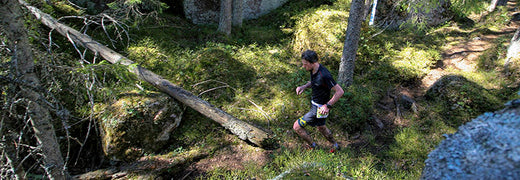
Congratulations to the Suunto Summit 2018 selections!
The 2018 Suunto Summiteers are:
Aniol, Spain
Daniel, Switzerland / Spain
Dmytro, Ukraine
Julia, Finland
Leonardo, Italy
Maggie, UK
Patrick, France
Patrik, Slovakia
Sherry, USA
Tara, USA
Teoh, Malaysia
Valentin, Romania
Verónica, Ecuador
(All participants have been individually contacted by Suunto.)
Welcome to #suuntosummit, everyone!
***** 5 February 2018 *****
Suunto Summit 2018
Do you want to be a part of a weekend full of trail running in the Finnish forest, workshops on Suunto products, and a little sauna too? If you can get to Helsinki for 4-6.5, we’ll do the rest!If this sounds like your kind of weekend, fill in the application below and tell us why you’re passionate about sports and Suunto, and share your story with #suuntosummit
Applications are due by 22.2.2018. (Amer Sports employees are not eligible for this Suunto Summit)
APPLY NOW
Here's what the Summit looks like in action!
In 2017 we hosted an inspiring group of 16 Suunto fans from around the world for a weekend of sharing experiences – and some muddy Finnish trails.
Summit team gearing up for the start of the trail race
Serene moment for Sante in the forest
Ready for orienteering?
Summiteers celebrating at the finish of Bodom Trail
All images by Philipp Reiter
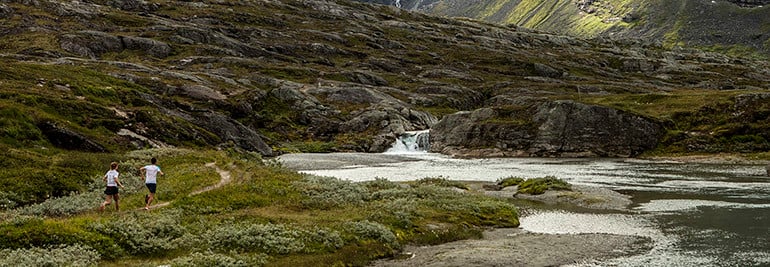
Three inspiring stories from Suunto World Vertical Week 2018
Kat Schjei, California, USA
Feeling inspired by @suunto #verticalweek ; in the last seven days I have climbed over 5,000 feet either wearing this adventurous toddler, or pushing him in the stroller. It isn't easy, but I thrive on the challenge and seek more adventures with my sidekick every day. 🗻 #verticalweek #noexcuses #motherrunner #BAMR #BAMRbassador #runitfast #irunhesleeps #saltymountainmamas #getsalty #trailrunner #ultrarunners #trailchix #lasthorse #r4twc #running4thosewhocant #nomeatathlete #ultrarunner
A post shared by Kat Schjei (@smushtush) on Mar 1, 2018 at 6:15pm PST
“I live in Southern California but have lived all over the US. I'm a mom of three small kids and work as a nurse at the children's hospital, but that doesn't stop me from exploring and climbing as much as possible.
I'm currently training for my fourth 100-mile race, the Tahoe Rim Trail 100, which is located on some of my favorite peaks to climb. My Vertical Week was fun! I strapped my youngest son on my back and we climbed around 1500 feet a day, which is a crazy hard strength workout with his added weight. He loves taking in the sights as much as I do, and I know this is great race training because the added weight feels like double the distance.
I'm very much an advocate for getting kids outside; my three have learned to fall in love with the beauty that is rewarded when you put effort into a steep climb. I live my life to lead them and other families by example.”
Anna Persson, Norway
Added 4000m to my vertical weekend today! It felt like 1000 😁 #verticalweek #timetoplay #romsdalen #uterauma #suunto 's #week #mountains #outdoorlife #training #sun #winter
A post shared by Anna Persson (@anna_persson_) on Mar 2, 2018 at 11:23am PST
“I came to Norway 12 years ago. A summer job made me come here and nature has kept me here. The nature of Rauma in Romsdalen, Norway is spectacular with its many high and steep mountains by the sea. The mountains are in my backyard so I can walk to them from my front door.
My favorite training mountain in winter time is 1439-meter-high Kyrkjetaket – and the mountains around it. I often climb it two or three times before I go to work in the afternoon. The same mountain feels different every day. Snow and weather conditions may vary from day to day but when I`m at the top, it’s always the same; magical, wonderful feeling of freedom.
My #verticalweek was pretty hectic because of work. I also caught a cold. Luckily the snow and weather conditions were perfect this week so it was easy for me to do some vertical meters every day.”
Hannes Gehring, Colorado, USA
It’s been nearly 7 months since I’ve raced. Following my last race I found myself fighting demons, questioning and challenging my dreams and pursuits in ultra-running. I ballooned from a race weight of 168 to 206 lbs by mid December. It has been snail-crawl back to fitness but my focus has never been more deliberate. Yesterday’s 24 miles and 7,000 feet of climbing capped the week at 100 miles and 20k of vertical gain and felt like an unleashing of a few months worth of frustration, angst, and doubt. Sometimes following your passion, your crazy, and your heart is the only way to dig out of that hole you’re in. I’ve been digging for a few months. I’m back and there’s a fire 🔥🔥🔥coursing through my veins. (📷 Yesterday circa my 41,288th step 📸captured here by ninja photographer @itsmarincita) #uphillswagger
A post shared by Hannes Gehring (@uphillswagger) on Mar 5, 2018 at 10:46am PST
“Last March I decided to pursue ultra-running full time and moved into my truck with my two rescue dogs. They are the reason I found mountains; once I had rescued my first dog he led me to trails and helped me find my passion in mountain running.
Suunto's Vertical week went great for me. I was fortunate enough to climb over 20,000 vertical feet and cover over 100 miles, including a summit of the 14,035' Mt. Sherman here in Colorado.
I think any climb that gains 4,000 feet or more feels like a really burly climb. Typically, for my big days I aim for over 10,000 feet of uphill climbing. The steeper the better as far as I am concerned!
Ultra-running is my biggest passion (other than my dogs). So, my biggest motivation when a climb gets tough is that I want to do this professionally at the highest level. It keeps me humble and hungry grinding up a steep trail, knowing my dreams are lofty, but attainable – if I just keep pushing up that hill. Plus, my dogs make every climb look like it's a cake walk and that's a humbling motivator as well!”
Congratulations, Kat, Anna and Hannes! Your new Suunto Spartan Sport Wrist HR Baro watches are on their way to you.
And a big thank you to everyone who participated in Suunto World Vertical Week and shared photos and stories. Happy adventures to you all – both in the ups and downs!
LEARN MORE ABOUT SUUNTO WORLD VERTICAL WEEK 2018












































































